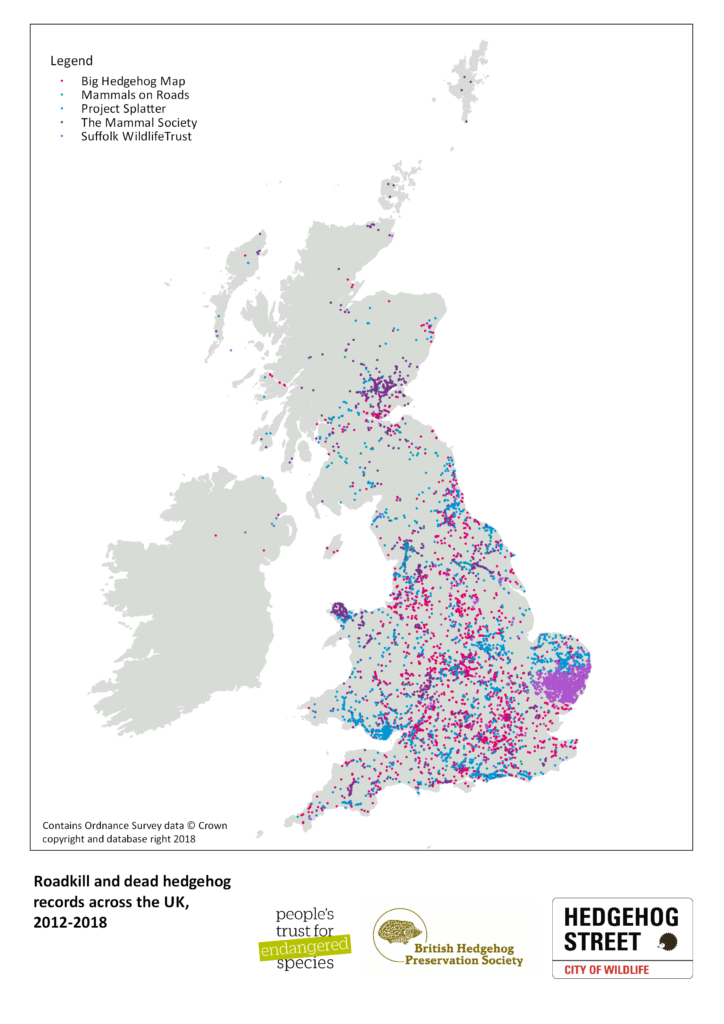Driving hedgehogs to extinction
22nd January 2020
A research study investigating hedgehog mortality risks on British roads.
Driving along country roads, it’s clear to see that traffic is a major threat to our native hedgehogs. The question however, is whether there are particular factors that make some roads deadlier than others for hedgehogs. A research project at the University of Sussex, funded by PTES, BHPS and the Mammal Society, set out to find out…

Various research methods were used along with analysis of over 12,500 roadkill records from our very own BIG Hedgehog Map, as well as the Mammals on Roads survey, Project Splatter and Mammal Tracker.
The study aimed to assess when, where and why hedgehog road casualties are happening in Britain…
The results…
When?
As predicted, hedgehog road casualties were low in winter. Hedgehogs hibernate during the cold winter months, only rousing periodically to search for food.
Numbers of casualties was found to rise steadily during the year, reaching a peak in July, before declining.
This tells us that any mitigation approaches identified would be most important in the summer months.
Where?
9% of the 400,000km of road in Britain was found to be particularly dangerous for hedgehogs. Although it wasn’t possible to identify specific roadkill ‘hotspots’, higher numbers of dead hedgehogs were found in several areas including central Britain, southern Wales, and the Scottish Central Belt.
Areas associated with a high probability of roadkill were urban and grassland, with the highest danger being on the suburban edges of large cities and throughout small towns and villages.

Why?
Casualties peaking in July suggests that roadkill is likely to be linked to breeding. In July, vulnerable juvenile hedgehogs leave their mothers and begin to forage for themselves. They often disperse to new areas at this stage.
As well as pinpointing areas of most concern, we were able to identify a seasonal peak in hedgehog roadkills in July: a time when vulnerable young hedgehogs are leaving their birthplace to forage alone. The good news is that knowing where and when hedgehog road fatalities occur means that we will eventually be able to target our efforts to reduce hedgehog roadkill. Not just on certain roads but also at specific times of year.
Mammal Society scientist, and author of the paper, Patrick Wright.
What next?
Knowing where and when hedgehogs are more likely to be killed on the roads can begin to inform us of approaches to make roads safer for hedgehogs.
This study has identified the type of area and times of year where hedgehogs are most at risk. Mitigation measures could include road signs and speed reduction, underpasses and overbridges and fencing to safely channel hedgehog movement. The presence of hedgehog-friendly linear landscape features such as hedgerows and grassy verges parallel to roads may also help. However much more research is required in order to determine how effective and feasible these mitigation measures would be.
How can I help?
Taking part in the PTES Mammals on Roads survey is a great way to get involved and contribute important hedgehog roadkill data.
And remember to log any hedgehog sightings, both alive and dead, on the BIG Hedgehog Map.

